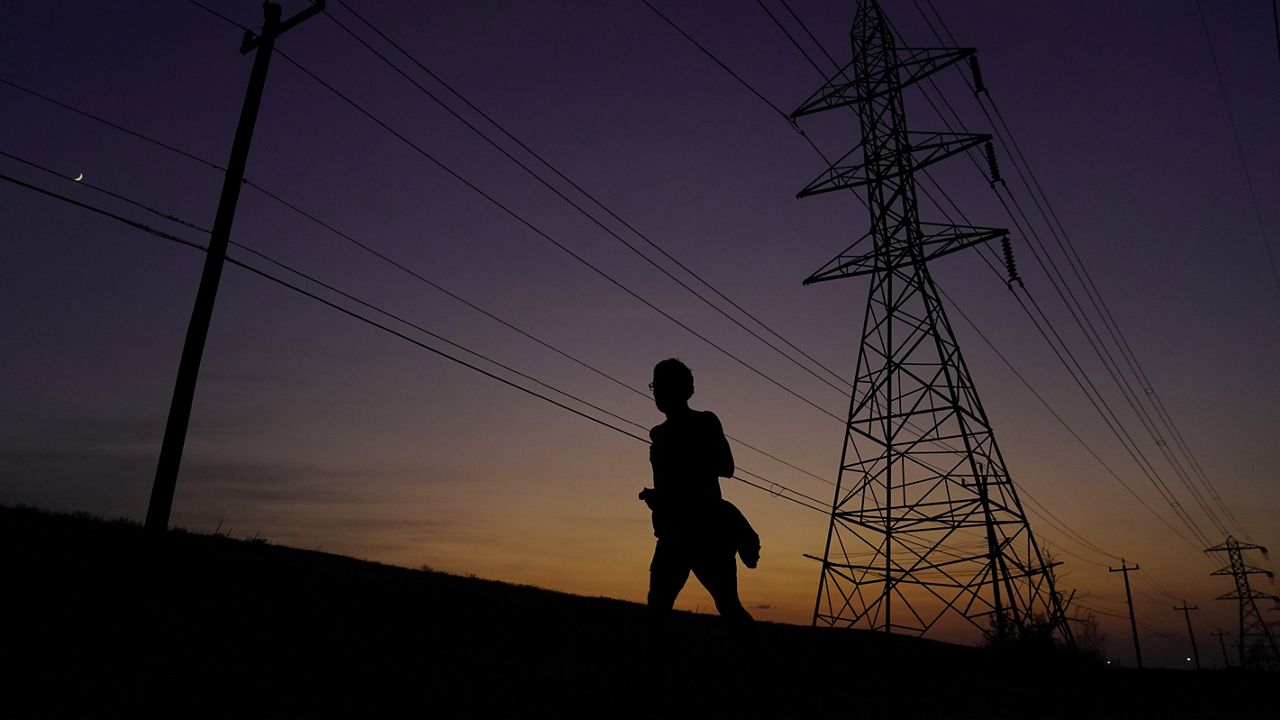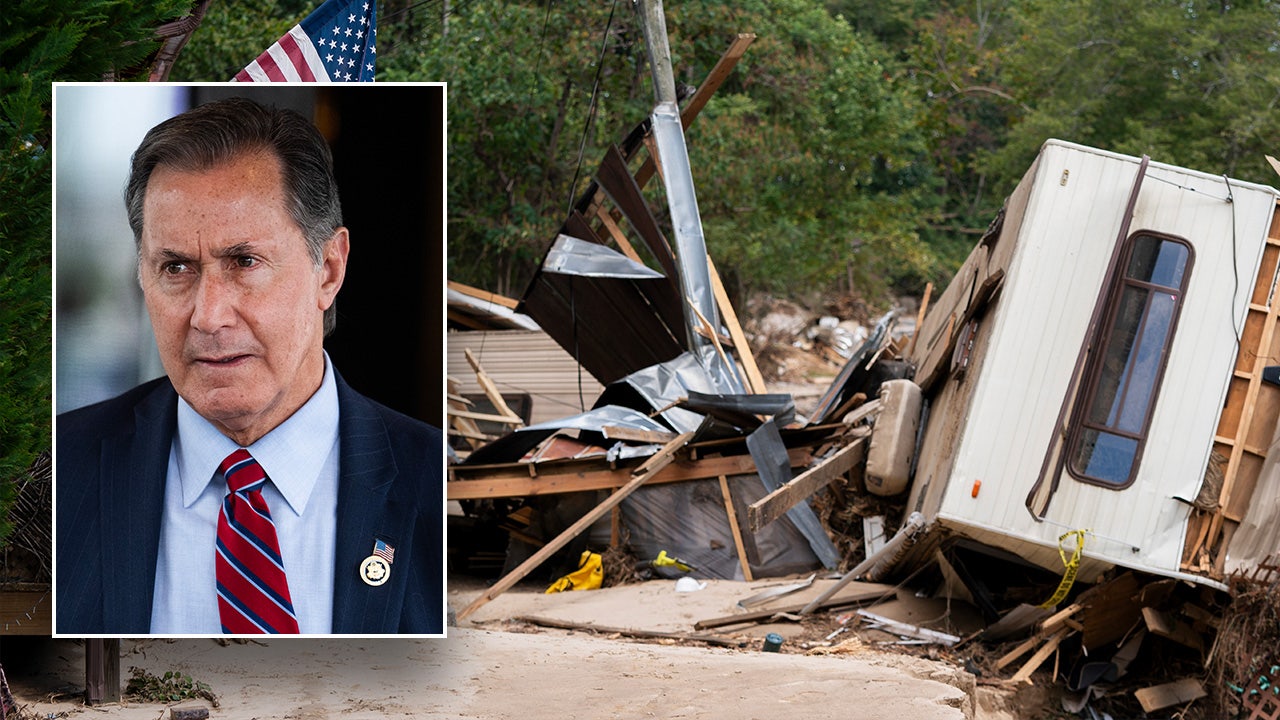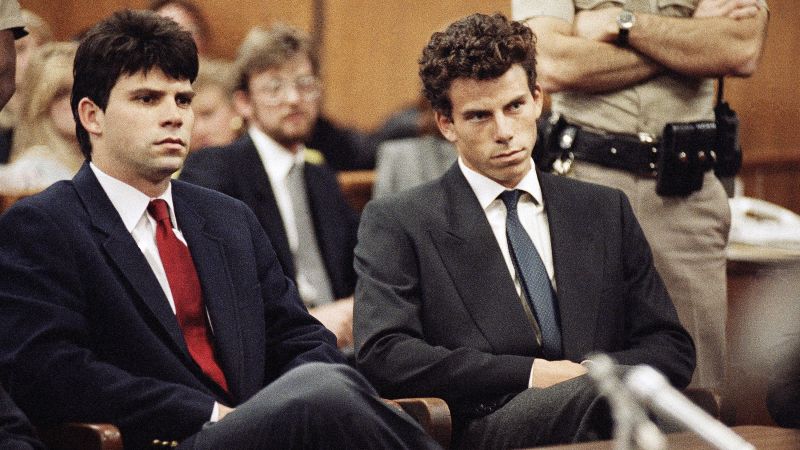Utah
The Great Salt Lake and Utah farms could save each other. Here’s how
/cdn.vox-cdn.com/uploads/chorus_asset/file/25100415/merlin_3001330.jpg)
Editor’s note: Here’s a question that catches people off guard: What would happen if Utah is successful in saving the Great Salt Lake? For the past two years the lake has been the subject of intense public scrutiny with efforts underway to save the lake to avoid toxic dust storms, food chain collapse and bird die-offs. Today we flip the question and wonder: What opportunities open up if the lake rebounds and is saved?
This story is the first in a series produced by the Utah journalists that make up the Great Salt Lake Collaborative, which includes the Deseret News. Today we explore what opportunities open up in agriculture, daily life, industry and recreation by restoring the lake.
For the 100-acre Johnson Family Farms in Cache County, things are generally looking up. Kelby Johnson, who runs the farm with his brother Braydon Johnson, recently left his side job to run the farm full time and spend more time with his three sons, who Johnson hopes will one day become the fifth generation of Johnson family farmers.
But first he has to ensure the land remains a farm while pressure builds to sell to real estate developers, cut costs and save water for the Great Salt Lake.
The Johnsons have worked this particular farm in Cache County for the past 150 years. While the business has shifted from producing dairy, to raising hay, to today farming crops like onions, potatoes, peppers, tomatoes and squash, one thing is constant.
“You have to have an awfully big dose of entrepreneurship to be a farmer,” Johnson says. But for him, he says, “there isn’t any other job that works hand in hand with God to quite the extent that a farmer does. Because you can’t control the weather, you can’t control the markets, you can’t control the bugs and the pests and the weeds and all the other things that are out there.”
Johnson and his brother are well aware of the sorts of things out there on the horizon. They’ve both worked as agronomists, helping other farmers decide what kind of equipment to buy and how to manage their farms to make them more successful. They know of a handful of dairies in Cache County that have sold all their animals this year to pay off loans and try to remain financially solvent. Nearly all the costs of running a farm — labor, equipment, fuel and even water — have exploded in recent years, even as the price local grocery stores are willing to pay for their crops has decreased.
Kelby Johnson standing next to a sand filtration system used for drip irrigation on his 100-acre farm in Benson, Utah, Nov. 16, 2023. The Johnson family has worked the farm for the past 150 years and Kelby Johnson hopes his children will become fifth-generation farmers. But the Johnsons must withstand pressure to sell to developers and cut costs and water for the Great Salt Lake.
But when it comes to pressure to save the Great Salt Lake, saving water could help save the family farm.
Though often seen as being at odds with one another, Utah’s farms and the Great Salt Lake have a lot in common. Both have suffered as a result of the water crises of recent years, and neither is exempt from the tension building with the state’s ongoing development and growth. Stark economic conditions for local farmers and for the lake have led some to suggest it’s time for Utah to give up the pursuit of agriculture entirely and leave all that water for the lake.
But local food and agriculture play a deep role in Utah’s sense of place and purpose. In a series of 2015 surveys, the nonprofit Envision Utah determined that 97% of the state’s residents believe we should grow more food locally.
There are, experts say, alternative solutions that would allow Utah farms and the Great Salt Lake to not only coexist, but thrive side by side. For local farms to achieve financial sustainability, the cost of producing food locally must decrease dramatically. And many strategies for getting more water to the Great Salt Lake could also improve the financial outlook for local farms.
“If we could all work together for things that make sense for everyone, if we could put the differences aside and be honest and upfront, we could fix this in probably not very much time,” Johnson says. “If we could get to that point, I think most everyone in ag would love that. Because nobody is interested in a Great Giant Salt Dust Mess. Nobody is interested in the environment getting wrecked.”

Elise and Maddox Downs build a cairn at Great Salt Lake State Park in Magna on Friday, Oct. 6, 2023.
Megan Nielsen, Deseret News
Stabilizing the Great Salt Lake
Any discussion of restoring the Great Salt Lake inevitably brings farms into the mix. After all, agriculture as a sector uses more water than all the cities and towns in Utah combined. Growing alfalfa, mostly to feed cows and other animals, is the single largest use of water that would otherwise feed the lake.
While this is true, some common beliefs about the relationship between the Great Salt Lake and Utah agriculture require some correction, according to Utah State University agroclimate extension specialist Matt Yost.
Agricultural water use has not increased in recent years, Yost says. The amount of water used by farmers on the Wasatch Front has remained stable for the past several decades — and more recently may be decreasing. So agriculture is not to blame for the lake’s rapid decline, Yost says.d
That said, it won’t be possible to save the lake without the cooperation of Utah’s farmers.
“We’re finding that we can reduce consumption of water by probably 10%-15% without affecting crop production. And most of that comes from reducing evaporation — that’s the major way we lose water that we can’t get back,” Yost says. “And if we do that across the board, we estimate we could send nearly 180,000-acre feet of water (a year) to the lake without affecting crop production.”
That’s about the minimum needed under conservative scenarios to raise the lake to 4,195 feet over 20 years.
Emerging technologies could potentially reduce water use from farms even further, and in many cases they could prove a boon to the farmers as well as the environment.
Harsh economic realities
Farming in Utah is naturally difficult. The high elevation, short growing season and yes, the lack of water, limit the number of viable crops farmers can choose from. Meanwhile, low-cost goods from national and international competitors with more favorable climates have cut profit margins razor-thin.
Faced with these economics, Utah farmers have engaged in a variety of solutions. Some have decided to exit farming entirely: the value of the land and water they own often exceeds the value of the crops they can produce, so they sell their property to developers. Between 2017-2022, Utah saw more than 500 farms go out of business, according to the USDA’s National Agricultural Statistics Service.
Other farmers like the Johnsons who want to see their farms stay in the family have opted to take second jobs to supplement their income and keep the farm afloat.
“It’s just a slow downward spiral for most farms,” Johnson says. “There’s not a lot of money in growing hay, so the kids say ‘OK, I guess I’ll get a real job,’ and eventually there’s no one left to take over and they’re left with the only option — selling out.”
Breaking the cycle, Johnson says, is a real challenge for farmers already dealing with slim margins. The Johnsons had hoped to shore up their own economic future by expanding their farm, but recently watched a plot of land they’d hoped to buy, sell to real estate developers at prices the Johnsons could never hope to pay.
“To see that go away because they can make a heck of a lot more money — you can’t blame them for that, everyone has to watch out for their own,” Johnson says, “but it’s sure hard when you work hard for something like that for a long time to watch it leave for a lot higher dollar.”
Silver buckshot
The complexity of the challenges facing both the Great Salt Lake and local agriculture mean no one approach is likely to resolve either situation, says Emily Lewis, a partner at Clyde Snow Attorneys at Law, who acts as project manager for the Utah Statewide Water Marketing Project, a water banking initiative that pays the owners of water rights to allow their water to flow to the lake. She prefers what she calls a “silver buckshot” approach — that is, the application of several smaller, but still effective, strategies all at once.
Read about the state’s water banking program.
Yost points to vertical farming as one possible solution. Crops are grown in vertically stacked layers in a controlled environment that eliminates evaporation and recycles water. Using vertical farms to produce feed for animals — think hay and alfalfa — can produce more feed on less land, while also reducing water use by 90%.
Agrivoltaics — the practice of installing solar panels on farmland and growing crops in between — could also prove effective, Yost says. While there is some loss of crop productivity, the panels help reduce water loss by shading plants from intense sunlight, and the income from the solar panels helps boost farm profit margins.
And still other, if perhaps less futuristic, solutions might work. There are conventional solutions such as hoop houses and greenhouses that allow crops to be grown in enclosed or indoor spaces, which reduces water loss and expands the growing season. Newer irrigation equipment, including smartphone-connected pivot sprinklers that rotate from a center point, could go a long way. These reduce farm labor costs by enabling sprinklers to be operated by computer software that estimates crop water needs, and they can reduce water use 20% to 40% for the majority of existing farms, according to Jim Bowcutt, director of the Utah Department of Agriculture and Food’s conservation division.
Even changing from the practice of flood irrigation to a similar but newer surge irrigation concept could prove effective, Bowcutt says. Flood irrigation does have some benefits for the Great Salt Lake and the environment — routinely dousing fields to water crops helps recharge soils and the aquifers beneath them, and the unused water eventually finds its way to the lake. But exposing all that water to the open air for extended periods of time comes with high evaporation losses, and it can result in uneven watering that reduces crop productivity.
Surge irrigation follows a similar idea, but with new technology. The field is laser-leveled to ensure water can spread evenly across the surface, and then sprinklers placed strategically throughout the field open up and push a pulse of water across the field — just enough to dampen the soil around sensors placed beneath the field. It’s a new concept, but based on two farms where it has been installed in Box Elder County, it could prove as or even more water efficient than pivot-based sprinkler systems, Bowcutt says.
All of these strategies have the potential to increase farm profits either by reducing costs, or raising farm revenue. And the water savings could also benefit the farms’ bottom line: farmers can lease the water they own but don’t use to other parties — including, potentially, water banks dedicated to the Great Salt Lake. As with other solutions, the revenue from these leases could help decrease the cost of growing food in Utah and make local farming more financially viable.
“Putting in these systems increases yields and decreases manpower,” Bowcutt says. “Honestly, the way it is right now with farms … it comes down to it’s hard to compete with development and the amount of money they can sell their crops for. So anything we can do to help producers get in the black a little more than the red helps.”

Steven Clyde stands by a flume, a humanmade channel for water, at his ranch in Kamas on Sunday, Oct. 15, 2023.
Megan Nielsen, Deseret News
There’s still some legal work to be done here to ensure water freed up by water conservation at farms and other sources isn’t simply reabsorbed by additional urban growth, says rancher Steven Clyde, who moonlights as one of Utah’s most prominent water attorneys. The groundwork for the concept has been laid with legislative changes that have been made to facilitate shepherding water to the lake, but it will take time to implement, he says.
“Fallowing could be a component of this. Crop switching is a component of this, but a large part is just modernizing (farm) systems to use water more efficiently,” Lewis says. “But farmers can’t afford it. That’s why they haven’t done it yet.”
Paying the bill
Clyde himself has struggled to scrape together enough savings to upgrade his irrigation systems. He spent 20 years paying off two irrigation pivots even with the aid of a low-interest loan through the Natural Resources Conservation Service.
“We’re a fairly large operation,” Clyde says, “but if you have a (small) 10-acre farm, realistically you’re not going to get there.” Selling your water and your land to the highest bidding real estate developer is, in a growing number of cases, the only financially feasible option.
This is where programs such as the Utah Department of Agriculture’s water optimization fund, which received $200 million from the state Legislature this year, comes into play. This program provides farmers with grants of up to $500,000 to install water-saving technologies on their farm — with the caveat that the water savings cannot be used to increase the farm’s irrigated crop land. That is, the savings must permanently reduce the farm’s water use.
Although the program started with a single, relatively small appropriation of funds, Bowcutt says the department sees interest in the program grow every time they open a new round of water project applications. In 2022, the program paid for upgrades at 163 farms, saving over 80,000 acre feet of water, or enough to raise the Great Salt Lake by more than an inch.

A pivot irrigation system is seen on the other side of a pond at Steven Clyde’s ranch in Kamas on Sunday, Oct. 15, 2023.
Megan Nielsen, Deseret News
A blue new deal for Utah farms
The Johnson Family Farm is already pretty water-wise, having replaced most of their older irrigation systems with pivot or drip-based water systems, Johnson says. But he sees ample potential for implementing water conservation at other farms — and they themselves have a few remaining fields that could stand to be upgraded.
But while conservation is generally good for a farm’s bottom line, Johnson says it isn’t just the upfront cost that has prevented him and other farmers from making upgrades to their irrigation systems. The frank reality, he says, is that he and other farmers do not trust state officials, and they remain leery of taking state money that they fear could have hidden strings attached.
For the last several decades, Johnson says, the state’s attitude toward farmers has been that they must use their water, or else surrender it to other uses around the state. If they don’t put the water they have on their fields, he fears the state will seize their water rights without compensation. Although a law passed in 2022 changes this, Johnson feels it hasn’t been on the books long enough for the state to prove it’s committed to this new approach.
“None of us are interested in losing one of the most important parts of our operation, especially after everything we have done to make it what it is,” Johnson says. “Do we want the Great Salt Lake to go dry? No. I don’t think anybody does. But how do we solve that problem? It’s going to have to come from people being personally motivated to make changes, and you personally motivate people by putting it in their best interest.”
There is, in Johnson’s estimation, a potential solution. If conditions on the lake improve, then revenues from other industries that rely on the lake — mineral extraction, brine shrimp, recreation, even real estate — will increase. Royalties and taxes will increase as a result of growing prosperity in those industries, putting more money in the state budget. Given that agriculture is the largest collective user of water, and given the outsized sacrifice farmers will have to make to realize this future for the benefit of all, Johnson argues that it would be reasonable for the state to kick some of the financial benefits back to the farmers themselves in the form of greater ag-oriented economic development.
This isn’t to say that the state doesn’t have dedicated programs for agricultural economic development, Johnson says — they do. But he recently watched a grant he applied for go to local food trucks instead of local farmers, suggesting to him that saving agriculture is not something the state takes very seriously.
Meanwhile, Utah farmers have struggled to find local outlets for their goods and wares. Since his local grain elevator went out of business, Johnson says he must drive to Idaho to sell grain — travel costs that further erode his ability to stay afloat.
“I wish as a state we had a little more vision and foresight to create better markets for agriculture, because right now we are losing a lot of our options,” Johnson says.
Thinking outside the box may be exactly what the state needs if it wants to both save the Great Salt Lake, and preserve local agriculture, says Lewis, the water banking project manager. The state has made significant strides toward protecting the lake in recent years, she says, and in the process they have realized the importance of listening to the state’s agricultural producers in order to fine-tune conservation programs in ways that benefit both the lake, and remain responsive to the needs of local farmers — whether those needs involve changes to state tax policies, or support for agricultural supply chains.
“It’s more than just asking the producers to do something different,” she says. “I want to take the state of Utah, pick it up, dip it in blue, and then pick it back up. To make real change, every aspect of the state needs to have a water bend to it.”

Utah
Rapper NBA YoungBoy pleads guilty in Utah prescription drug fraud ring

LOGAN, Utah (AP) — A Louisiana-based rap artist pleaded guilty Monday to his role in a large-scale prescription drug fraud ring that operated out of his multimillion-dollar home in Utah.
Rapper NBA YoungBoy, whose real name is Kentrell Gaulden, walked into a courtroom in Logan, Utah, with his head hung low as he entered the plea for his part in the alleged scheme, KTVX-TV reported.
The 25-year-old rapper was originally charged in the Logan District Court with 46 charges related to the alleged crime. On Monday, he pleaded guilty to two counts of third-degree felony identity fraud, two counts of third-degree felony forgery and six counts of misdemeanor unlawful pharmacy conduct. Gaulden entered a “no contest” plea to the remaining charges.
As part of a plea deal, Gaulden will not serve prison time in Utah. Instead, his four felony charges were reduced to Class A Misdemeanors and he was ordered to pay a $25,000 fine, the television station reported.
District Judge Spencer Walsh agreed to suspend a prison sentence as Gaulden is expected to serve a “substantial” 27 months in federal prison for related charges in a case stemming out of Weber County, Utah. Following his release, Gaulden will then be placed on five years of federal supervised probation.
“This is somewhat of a unique case where there have been multiple jurisdictions involved both in the federal and the state systems,” said state prosecutor Ronnie Keller. “This is just really a smaller cog in the bigger wheel of ultimately seeking justice.”
Gaulden had been living in Utah under house arrest, having previously been allegedly involved in a 2019 Miami shooting. His relocation to Utah came as part of a deal in 2021 in which his lawyers argued that “moving to Utah would keep YoungBoy out of trouble.”
During his hearing Monday, Walsh said it was clear that Gaulden was a very talented young man.
“I’ve seen so many times where you have young men and women who have a lot of talent and potential. They can be robbed of that potential when they start to really struggle with their addictions,” Walsh told Gaulden. “I don’t want that for you.”
Walsh continued saying, “I’m sure that in your future, once you’re done with your federal prison time, you can be really successful on federal probation and have a really bright future where you can reach your full potential in every aspect of your life. Best of luck to you, Mr. Gaulden.”
Gaulden, of Baton Rouge, Louisiana, also is known as YoungBoy Never Broke Again and has achieved four No. 1 albums on the Billboard 200 and one Top 10 hit on the Billboard Hot 100. His music includes “38 Baby,” “Outside Today” and Tyler, The Creator’s song, “Wusyaname,” on which he is featured with Ty Dolla $ign. That collaboration earned them a Grammy nomination in 2022 for Best Melodic Rap Performance.
Billboard reported only pop star Taylor Swift and rapper Drake had more streams in 2022, despite Gaulden having nearly zero radio airplay. According to Spotify, Gaulden has over 16 million monthly listeners.
Utah
Utes blast past McNeese behind an efficient shooting night

Utah responded well to a disappointing loss at Northwestern last week, easily dispatching McNeese 118-50 at the Huntsman Center on Monday night.
The Utes (3-1) looked sharp on offense most of the night, hitting 13 3-pointers while shooting 60.3% from the field in overpowering the visiting Cowgirls.
“That was a good kind of get-right game in terms of our shooting and scoring,” Utah coach Lynne Roberts said. “You know, everybody contributed, everybody did their job, which was the goal, but we just played with a lot more swagger.”
3 takeaways
An early run helped kickstart the offense. Utah led 7-6 four minutes into the game — with six of those points coming off a pair of 3-pointers from Gianna Kneepkens — but the Utes created some separation by ending the first quarter on a 17-3 run, with contributions from numerous players.
Utah went on several extended runs throughout the game against an overmatched Cowgirls team. In the second quarter after the teams traded 3-pointers to start, Utah rattled off a 16-2 run to push the lead to 29 just four minutes into the frame.
In the second half, after McNeese initially outscored the Utes over the first few minutes, Utah went on a 20-4 run over four minutes, and through three quarters, Utah nearly had 100 points (the Utes went into the fourth quarter leading 99-48).
Utah then capped the contest by outscoring McNeese 19-2 in the final period.
The Utes ended the night shooting 60.3% from the field, with a quarter-best 75% in the second quarter when they scored 38 points to go into the half with a 62-27 lead.
That efficiency extended over to 3-point range, where Utah made 13 of 22, and the free-throw line, as the Utes went 23 of 29 from the charity stripe. Utah had assists on 27 of its 41 made field goals.
McNeese, meanwhile, shot just 25.8% for the game.
Kneepkens ended up with a team-high 24 points, breaking the 20-point barrier for the first time this season, showing the kind of competitiveness she’s been known for in her accomplished career at Utah.
The junior guard also had two assists and two steals.
“The goal was 25 assists. We had 27 on 41 made baskets. That’s awesome. Everybody did a good job,” Roberts said. “No game is perfect. As a coach, that’s kind of my job to nitpick, but I’m not going to do it tonight.
“I thought we played as hard as we could … and we shot much, much, much better than we did the other night in a game we will not mention, but proud of our team.”
It was a good night in the post. The Utes dominated inside against McNeese, finishing with a 54-12 edge in points in the paint.
Utah also outrebounded the Cowgirls 47-30. While both teams had eight offensive rebounds, the Utes owned a 15-7 edge in second-chance points.
Maye Toure, the transfer from Rhode Island, was nearly unstoppable, as she made 9 of 13 shots for 21 points — her second 20-point game of the season — while adding eight rebounds and two blocked shots.
Reese Ross also continued her strong start to the year, as she looks increasingly comfortable in her sophomore season. By night’s end, she had 16 points, eight rebounds, four assists, two steals and a blocked shot.
“I think the most important thing we tried to focus on this week was to just play simple and do our jobs and not doubt, just play with confidence, because we work hard and just play like it,” Toure said.
Maty Wilke bounced back well from a tough outing. In Utah’s two-point loss at Northwestern, junior guard Maty Wilke was 0 of 7 from 3-point range and had a tough night offensively, as she finished with 6 points. She had a shot to give Utah a lead in the final minute, but her final 3-point attempt was off the mark.
Wilke, like many of her teammates Monday, came out with a dogged determination against McNeese. She quickly made a pair of 3-pointers near the end of the first quarter, then found teammates for assists to help spark an early second-quarter run.
“I thought Maty came in really fearless,” Roberts said.
All totaled, Wilke had a career high 19 points, plus six assists and two steals in 19 minutes in her best game of the young season.
She made four 3-pointers.
Wilke said following last week’s loss, the focus for the Utes has been “to do our jobs” — and for her, that means bringing energy and shooting touch off the bench.
“I’ve worked a lot in a couple days we had … of just getting my mindset right to bring energy and then hitting open shots,” she said. “So basically, (the focus was) just doing our job and then trusting my teammates that they’re going to do theirs as well.”
What’s next
Utah will stay at home for a couple more games before heading to Grand Cayman Islands for a Thanksgiving week tournament.
The Utes host Saint Joseph’s on Friday at 7 p.m. in the back end of a doubleheader with the Utah men’s basketball team. The game will be streamed on ESPN+, with the radio broadcast on 700 AM.
Utah
What Kyle Whittingham said about the future of NIL at Utah

Kyle Whittingham is adapting to the realities of college athletics in the Name, Image, and Likeness era, where financial resources and the transfer portal play increasingly critical roles in building a competitive team. After a humbling loss to No. 18 Colorado, in which the Utes surrendered the most points in a decade, Whittingham acknowledged the success of programs leveraging the transfer portal and NIL opportunities to reshape their rosters quickly.
Speaking at his Monday press conference, Whittingham stated, “It’s going to be a heavy shopping season for us in the portal.” This remark reflects Utah’s commitment to remaining competitive by embracing the new model of roster management. Whittingham also revealed that the program has already established a budget specifically for NIL allocations to players, signaling a significant shift in how Utah approaches player recruitment and retention. “It will be a big bump in how much Utah will be paying to players,” Whittingham noted, emphasizing the importance of keeping up with the demands of modern college football.
These changes come at a pivotal moment for the Utes, who find themselves at 4-6 and on the brink of their first losing season since 2013. With two games remaining, Utah faces an uphill battle to salvage the season, starting with a matchup against No. 22 Iowa State on Senior Day this Saturday. The game, set for 7:30 p.m. MT on FOX, also serves as an opportunity to honor the team’s seniors, who have contributed significantly to the program’s success in recent years.
Kyle Whittingham says Utah extending search for next offensive coordinator
As Whittingham prepares for the offseason, his focus on NIL and the transfer portal underscores his determination to position Utah for future success. By increasing investments in players and leveraging the portal strategically, Whittingham aims to rebuild a roster capable of competing at the highest level, ensuring the Utes remain a force in an increasingly competitive college football landscape.
-

 News1 week ago
News1 week agoHerbert Smith Freehills to merge with US-based law firm Kramer Levin
-
/cdn.vox-cdn.com/uploads/chorus_asset/file/25724877/Super_Nintendo_World.png)
/cdn.vox-cdn.com/uploads/chorus_asset/file/25724877/Super_Nintendo_World.png) Technology1 week ago
Technology1 week agoThe next Nintendo Direct is all about Super Nintendo World’s Donkey Kong Country
-
Business6 days ago
Column: OpenAI just scored a huge victory in a copyright case … or did it?
-

 Health6 days ago
Health6 days agoBird flu leaves teen in critical condition after country's first reported case
-

 Business2 days ago
Business2 days agoColumn: Molly White's message for journalists going freelance — be ready for the pitfalls
-
Politics1 week ago
Editorial: Abortion was on ballots across the country in this election. The results are encouraging
-
World6 days ago
Sarah Palin, NY Times Have Explored Settlement, as Judge Sets Defamation Retrial
-

 Politics1 day ago
Politics1 day agoTrump taps FCC member Brendan Carr to lead agency: 'Warrior for Free Speech'





















